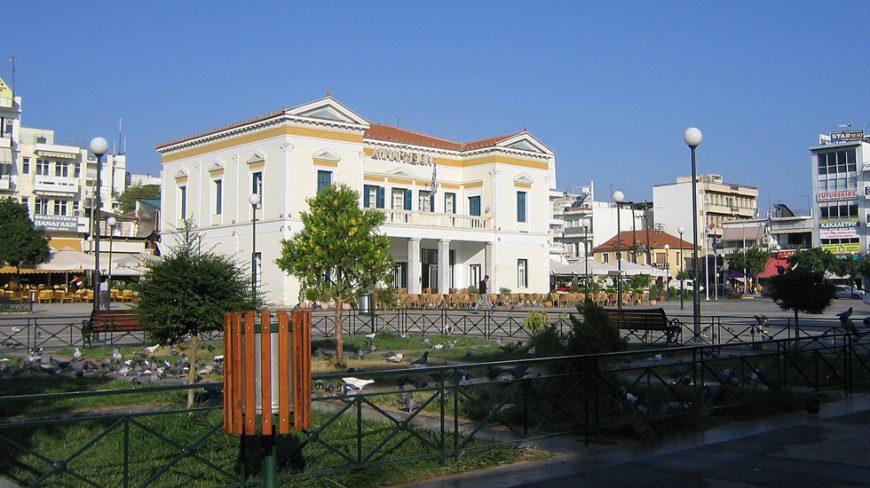Sparta (Greek: Σπάρτη, Spárti) is a town and municipality in Laconia, Greece. It lies at the site of ancient Sparta. The municipality was merged with six nearby municipalities in 2011, for a total population (as of 2011) of 35,259, of whom 17,408 lived in the city.
Beginning in the 13th century, the political and cultural center of Laconia shifted to Mystras, some 4 km to the west. The settlement at ancient Sparta, named Lacedaemonia, continued to exist, although greatly depopulated. Until modern times, it was occupied by a town of a few thousand people who lived among the ruins, in the shadow of Mystras. The Palaiologos family (the last Byzantine Greek imperial dynasty) also lived in Mystras. The Despotate of the Morea was captured by the Ottomans under Mehmed II in 1460.
In 1834, after the Greek War of Independence, King Otto of Greece decreed the town should be expanded into a city. Modern day Sparta, capital of the prefecture of Lakonia, lies on the eastern foothills of Mount Taygetos in the Evrotas River valley. The city has been built upon the site of ancient Sparta. To the southwest stands Mt. Taygetos. To the east of the city stands the Parnonas mountain range, which is forested predominantly with Greek fir trees and other pines.
Modern Sparta’s origins date back to October 20, 1834, when King Otto issued a decree on the construction of the new city. Bavarian city planners, headed by Fr. Stauffert, designed a city of 100,000 inhabitants based on the neo-classical architectural model.
Today Sparta maintains its good design, boasting large squares and wide streets lined with trees, while many of the older buildings remain in excellent condition. The city of Sparta is the economic, administrative and cultural center of Lakonia. A key factor in the advancement of the city’s development is the operation of two departments of the University of Peloponneseand a department of the Technological Educational Institute.
The centrally located main square is dominated by the most imposing neo-classical building in Sparta, the City Hall. Built in 1909, City Hall bears the signature of the Greek architect, G. Katsaros.[3] During the monarchy(which was abolished by referendum in 1973), the title of Duke of Sparta was used for the Greek crown prince, the διάδοχος (diádokhos).

